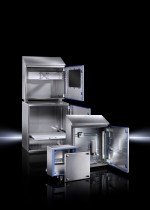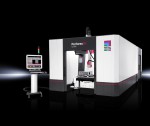
The importance of human induced vibration
Published: 07 November, 2019
Any engineer working on a structure project, be that bridge or building, obviously need to ensure that it is safe and comfortable for use. Despite those images of swaying buildings (think the Millennium Bridge ‘wobble’ here), human footfall isn’t particularly likely to cause structure catastrophe, but it is, nonetheless, important for human induced vibration to be taken into account.
The effect on structures
Vibrations can affect structures in a wide range of ways. Two of the main ways are resonance and aeroelastic fluttering.
When Object A vibrates at the same natural frequency as Object B, this is known as resonance. As a result, object B resonates with this and will begin to vibrate too. Think singing to break a wine glass! Although the person singing isn’t touching the glass, the vibrations of their voice are resonating with the glass’s natural frequency, causing this vibration to get stronger and stronger and eventually, break the glass.
Aeroelastic flutter differs slightly; for example, a force is applied to Object B, causing it to shake. It’s not necessarily at the same frequency as Object B’s natural vibration, but it makes Object B move all the same.
When an object resonates, it is technically fluttering too. But not everything that flutters is necessarily resonating. This is how confusion over disasters such as the Tacoma Bridge collapse occur — for a long time, and to this day, the event is used as a textbook example of resonance. However, it’s been argued that the bridge’s collapse wasn’t caused by resonance, but by fluttering.
Fluttering also occurs with human induced vibrations, and an example of this is when human movement is applying force, causing the structure to vibrate. Some instances would also see resonation happening too, but it wouldn’t be a certainty.
Engineers have to ensure that their designs reduce the damage or discomfort caused by either fluttering or resonating.
What could happen…
The structure and users within a building can be compromised when fluttering or resonation occurs, and it can have a range of impacts:
• Jeopardise integrity of sensitive equipment. Depending on what the building is used for, what is within and what can be affected by the vibrations of those inside the building. Universities, for example, may have sensitive equipment whose accuracy and performance could be damaged by vibrations.
• Jeopardising structural integrity. Eventually, the build-up of constant vibrations on a structure can lead to structural integrity being compromised. A worse-case scenario would be the complete collapse of said structure.
• Swaying bridges. The Millennium Bridge is one of the best examples of resonance caused by human induced vibrations and fluttering. As people walked across the bridge, the vibrations and swaying caused oscillations in the bridge. Everyone crossing the bridge would then sway at the same time to avoid falling over, resulting in a cycle of increasing and amplifying the swaying effect.
• Human health suffering. Research has found that vibrations in buildings and structures can cause depression and even motion sickness in inhabitants. Buildings naturally respond to external factors such as the wind or human footfall within. This low-frequency vibration can be felt, even subconsciously, by people. It has been argued that modern designs featuring thinner floor slabs and wider spacing in column design mean that these new builds are not as effective at dampening vibrations as older buildings are.
Getting around the issue
Modern designs that favour thinner slabs and wider column design and spacing tend to be susceptible to all forms of vibration, whether it is human-induced or otherwise. Using advanced building design software at the design stage is an effective method for engineers to test footfall on a design and see the resulting vibrations.
Vibrations are inevitable, but engineers must account for a wide range of catalysts that trigger vibrations in a structure, such as human footfall, adapting their overall design accordingly.
Sources:
https://www.oasys-software.com/news/analysing-vibration-with-gsa/
https://www.oasys-software.com/case-studies/footfall-analysis-singapores-helix-bridge/
https://www.oasys-software.com/case-studies/princeton-university-frick-laboratory/
http://homepage.tudelft.nl/p3r3s/MSc_projects/reportRoos.pdf
https://www.forbes.com/sites/startswithabang/2017/05/24/science-busts-the-biggest-myth-ever-about-why-bridges-collapse/#1b9e3b001f4c
https://phys.org/news/2017-03-impact-bridges-skyscrapers-human-health.html
https://www.quora.com/Whats-the-difference-between-resonance-and-aeroelastic-flutter
https://www.telegraph.co.uk/science/2017/03/19/wobbly-skyscrapers-may-trigger-motion-sickness-depression-warn/





 RITTAL says its Hygienic Design System enclosures combine the features of its Hygienic Design Compact enclosures with a modular, bayable configuration.
RITTAL says its Hygienic Design System enclosures combine the features of its Hygienic Design Compact enclosures with a modular, bayable configuration. Electrical engineering firm, LCA Controls, reports it has switched its control panel operations from manual production to laser-machining and the move is expected to transform its productivity and efficiency. LCA Controls says it has invested in a RITTAL Perforex LC 3015 3D laser machining centre – a system which will revolutionise construction of its stainless-steel panels by automating processes previously done by hand.
Electrical engineering firm, LCA Controls, reports it has switched its control panel operations from manual production to laser-machining and the move is expected to transform its productivity and efficiency. LCA Controls says it has invested in a RITTAL Perforex LC 3015 3D laser machining centre – a system which will revolutionise construction of its stainless-steel panels by automating processes previously done by hand. RITTAL says busbar systems, or busbar supports are essentially heavy conductors, typically made of copper, which carry and distribute powerful electric currents to components that consume electrical power throughout an assembly. The company says busbars are not only easy to install (certainly compared to cabling), but they also play a major role in the design and safe operation of a switchgear and controlgear assembly.
RITTAL says busbar systems, or busbar supports are essentially heavy conductors, typically made of copper, which carry and distribute powerful electric currents to components that consume electrical power throughout an assembly. The company says busbars are not only easy to install (certainly compared to cabling), but they also play a major role in the design and safe operation of a switchgear and controlgear assembly.
